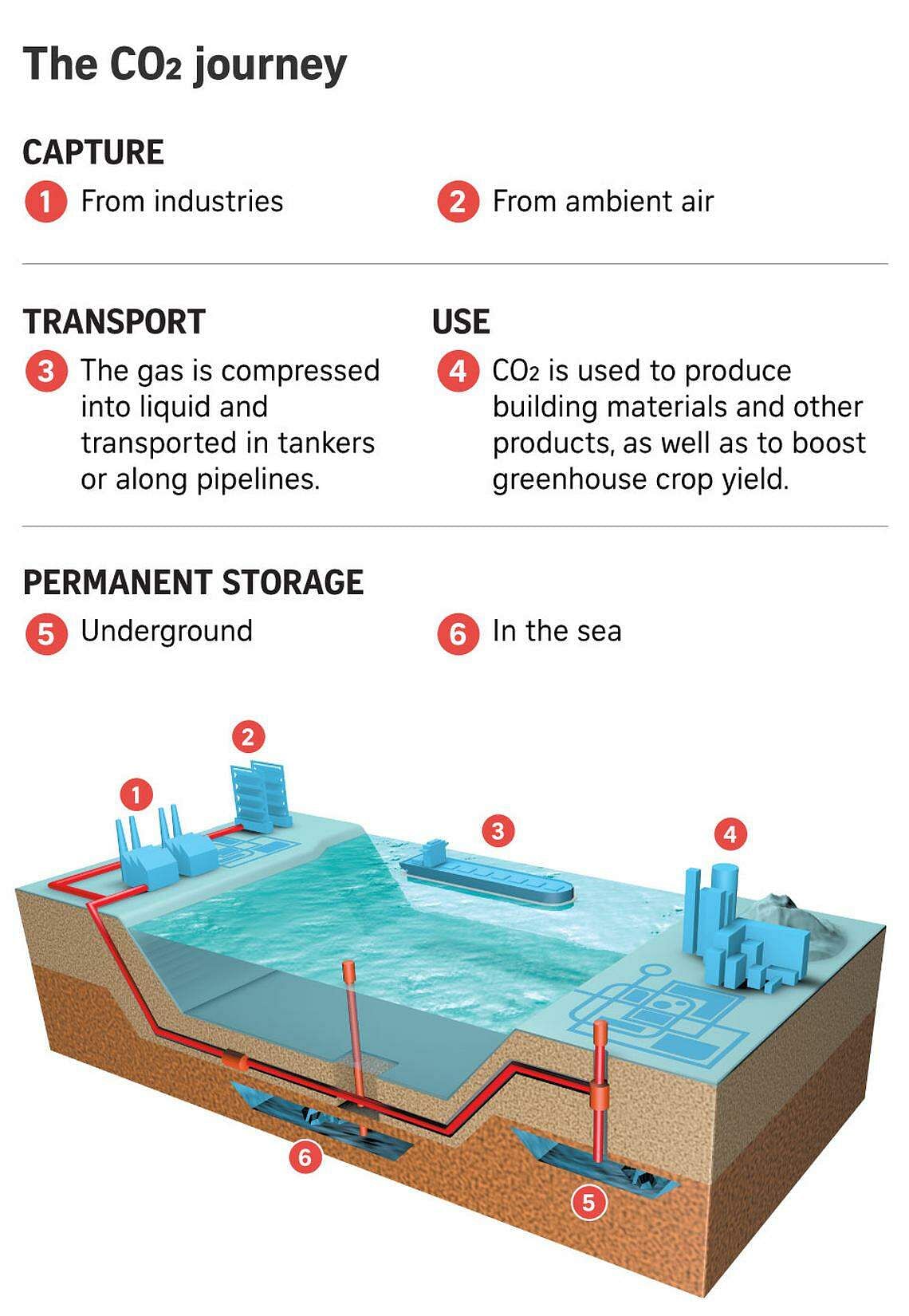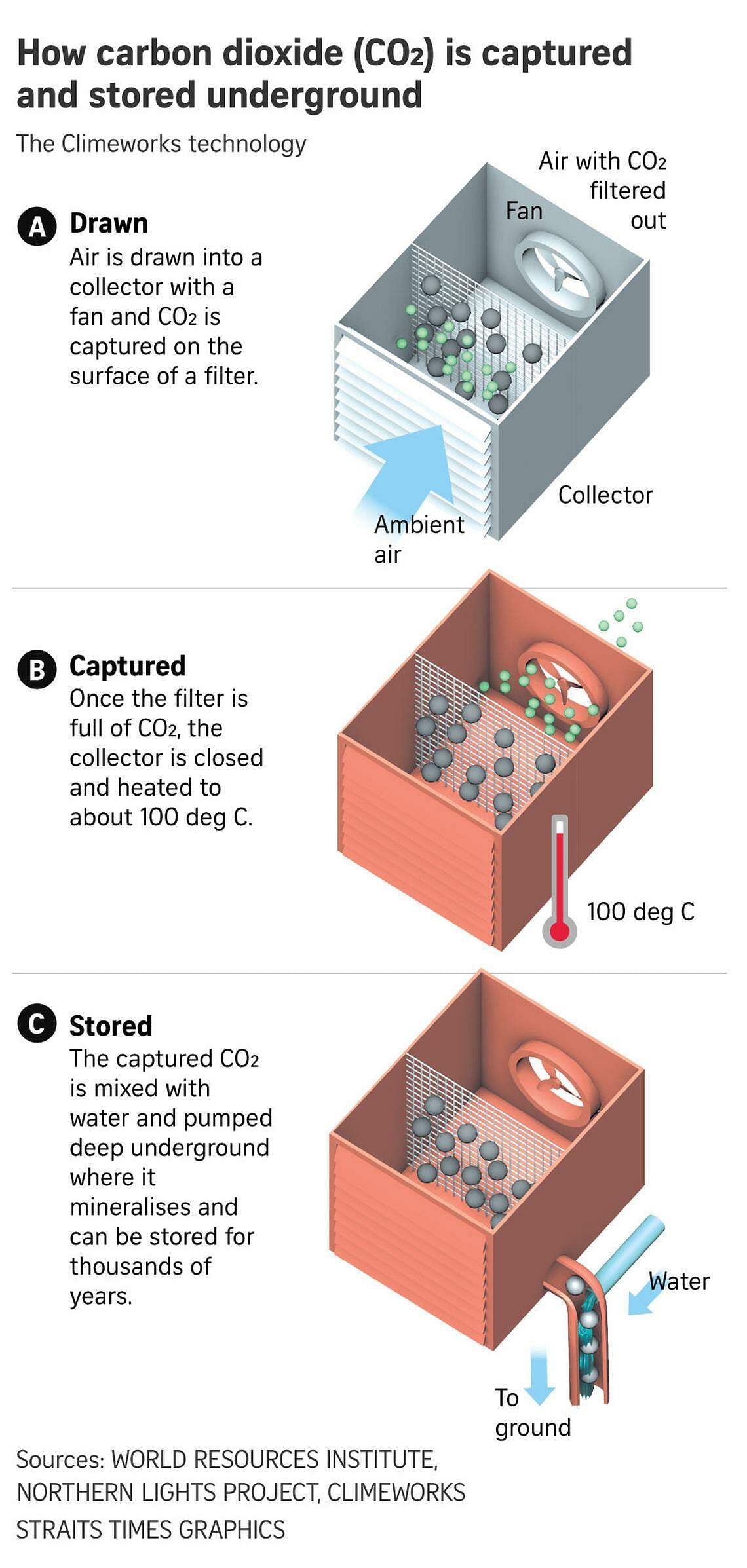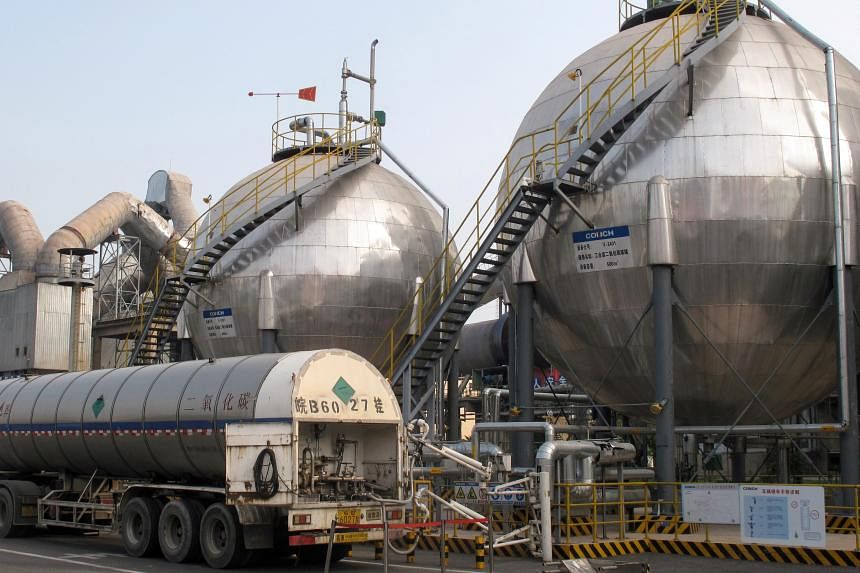SINGAPORE - To reach its goal of net-zero emissions by 2050, Singapore is considering all options for reducing them, including by utilising proven technologies – such as solar panels – and studying the potential of novel ones.
Since the start of 2024, the Republic has rolled out new grants and collaborations to learn more about carbon capture and utilisation technology. The Straits Times looks at the latest tech and research in the CO2 ecosystem.
Step 1: Capturing CO2
CO2 is captured from hard-to-abate sectors - which are emissions-intensive sectors that have limited alternatives for decarbonisation - such as the power, industry and chemical sectors.
Research is under way to determine the most cost-effective way of capturing CO2 from natural gas and waste-to-energy plants, where it is found in low concentrations.
Tech that has proven effective in capturing CO2 in dilute amounts can easily be deployed in plants which emit CO2 in higher concentrations.
Researchers from the National University of Singapore are trialling a carbon capture device at a waste-to-energy plant in Tuas South. The device uses metal-organic frameworks - sponge-like materials that can selectively absorb CO2.
Another group of NUS scientists is testing the use of membrane technology – typically used for water filtration – to capture CO2 molecules from power plants.
Direct air capture
Aside from capturing emissions from carbon-intensive sectors, direct air capture technology, which uses chemical reactions to pull CO2 out of the air, is also coming to the forefront.
When air moves over these chemicals, they selectively react with and trap CO2, and allow other components of air to pass through.
According to a report by the International Energy Agency in 2023, 27 such plants have been commissioned to date, capturing almost 0.01 million tonnes of CO2 a year.
Climeworks’ latest Mammoth plant in Iceland - its largest plant to date - has goals of capturing a megaton of CO2 by 2030 and a gigaton by 2050.
Currently, the CO2 is stored close to where it is captured to reduce costs and emissions associated with its transport.
Step 2: Transporting CO2
Once the CO2 has been captured, it is often compressed and liquefied before it is transported on ships or via pipelines for storage.
Depending on the distance, experts say that existing gas pipelines or gas tankers can be used for CO2 transportation.

Step 3: Storing the CO2
CO2 can be pumped into deep geological formations and stored either on land or under the sea. Scientists, however, are concerned about potential CO2 leakage and its impact on human and animal health.
Researchers at the Nanyang Technological University are studying whether Singapore has any suitable rock formations for CO2 storage. Early indications have shown that western Singapore could be a viable location, though more detailed surveys are needed.
At the same time, the Singapore government is working with Shell and ExxonMobil on a cross-border project to capture and store at least 2.5 million tonnes of CO2 yearly, by 2030. Possible partners include Indonesia and other regional countries.
Several South-east Asian countries, including Indonesia and Malaysia, have announced their ambition to become a regional carbon hub.
This could manifest similarly to the Northern Lights Project in Norway, which offers carbon storage as a service to companies in Europe.
This allows industrial emitters to ship their CO2 to onshore facilities near Bergen on Norway’s western coast.
From there, the CO2 will be piped to a geological formation below the seabed in the North Sea for permanent storage.
The first phase of the project will start from mid-2024, with an initial capacity of 1.5 million tonnes per year.
The goal is to eventually expand capacity by an additional 3.5 million tonnes to a total of five million tonnes, depending on market demand.

Utilisation
If not stored deep underground, captured CO2 can be used to create new products and services. It is commonly used in the chemicals industry, to create building materials and to boost crop yield in greenhouses.
For instance, concrete manufacturing firm Pan-United uses technology to permanently trap in concrete the CO2 that is emitted by chemical companies on Jurong Island.
It is seeing an increasing demand for its CO2-mineralised concrete, which has been used in major projects like Tuas Port.
A number of research projects in this space are currently under way. For example, researchers here are looking to use incineration ash to capture CO2 and create alternative sand, which can be used for building footpaths and in coastal protection structures or land reclamation.
Ocean-based CO2 removal
This entails using techniques to enhance the ocean’s natural ability to absorb and store more CO2 from the atmosphere.
National water agency PUB is constructing the world’s largest CO2 removal facility, which can remove some 3,650 tonnes of CO2 yearly when fully operational in 2025.
By using electrolysis, an electrical current is passed through seawater from PUB’s desalination plants, which breaks it down to its constituents - hydrogen and oxygen.
This process allows CO2, which is dissolved in seawater, to be trapped in the form of solid calcium and magnesium-based materials for at least 10,000 years.


